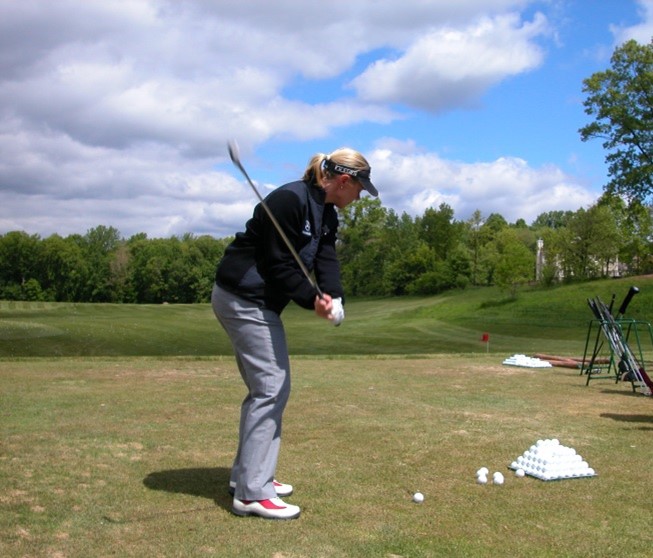The Slot Starts at the Top

by Dr. T. J. Tomasi, Keiser University College of Golf Senior Faculty and Director of Research
Most golfers think that fitting the golf club into the so-called “pro slot” starts during the downswing, but in order to slot the club on the way down, you must be in position at the top of your backswing. The slot has characteristics at the top, such as the club shaft bisecting the trail arm, a straight lead arm over a bent trail arm, and a big separation of the hands from the back shoulder as the clubhead closes in on the ball. How does the average golfer become a “slot machine?” The answer is by making sure your top-of-the-swing position is correct because “the slot starts at the top.” Let’s look at the necessary features you should incorporate by inspecting the top of the backswing position of Annika Sorenstam – one of the greatest golfers of all time. First, she arrives at the top with her back leg slightly flexed, which allows her hips to be active as she starts down. The knee flex keeps the hip joints active, avoiding the locked-up condition that occurs when the back knee goes ramrod straight.
Second, her left arm matches the angle of her shoulders (relative to her spine), a perfect on-plane position. Third, her shoulders are turned ~ twice as much as her hips to ensure coil.

To feel this position, I have my students use what I call “the no backswing, backswing.” I have them pose in Annika’s position and adjust until they are perfect, then start their downswing from there. When they are in the correct position at the top, “slotting” the club on the way down is easy.

Once in position, she simply drops her arms downward, then turns and hits it.
Note 1: If the top of the backswing position is such a key, how can golfers like John Daly and Fred Couples, even at senior ages, play so well when their backswings have a lot of “extra things” going on? The answer is simple—all those “extra things” like the club crossing the line and a clubhead that dips way past parallel are just window dressing. After they’re through with them, the good player returns to an on-plane position and then slots the club.
Note 2: The problem is that for most golfers, the “extras,” while they can add distance, are not always upgrades because ball control becomes a problem. As a teacher diagnosing a new student, your choice of how to proceed is to (1) take out the extras then slot the club or (2) show the student how to go from the extras during the backswing to the slot at the top. =
Note 3: Sometimes, the “extras” are so ingrained that they are difficult to remove, so the situation requires a student with dedication and a teacher with “options.”
If you’d like to study with Dr. Tomasi and other PGA Master Professionals, contact The College of Golf today.












